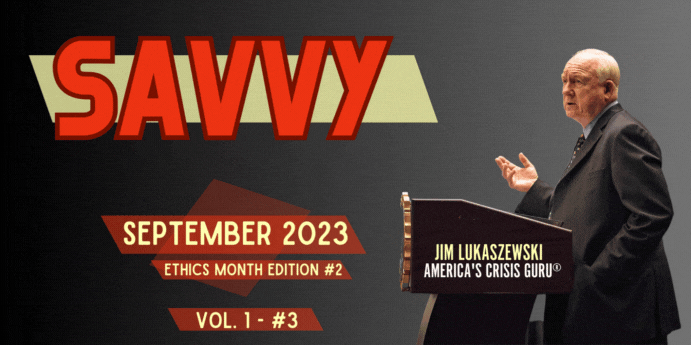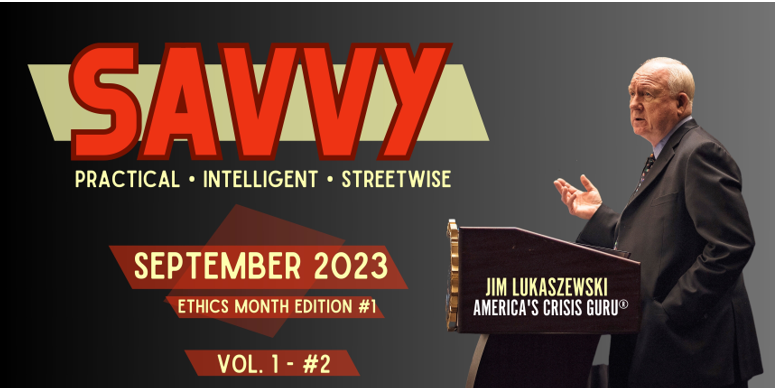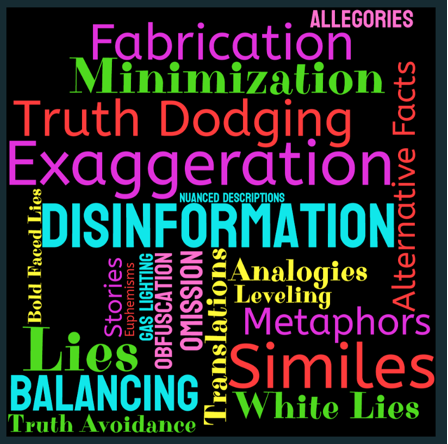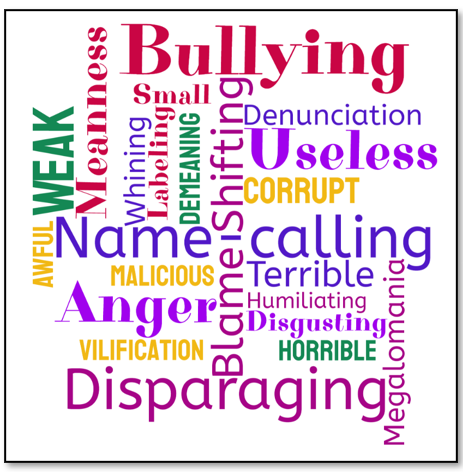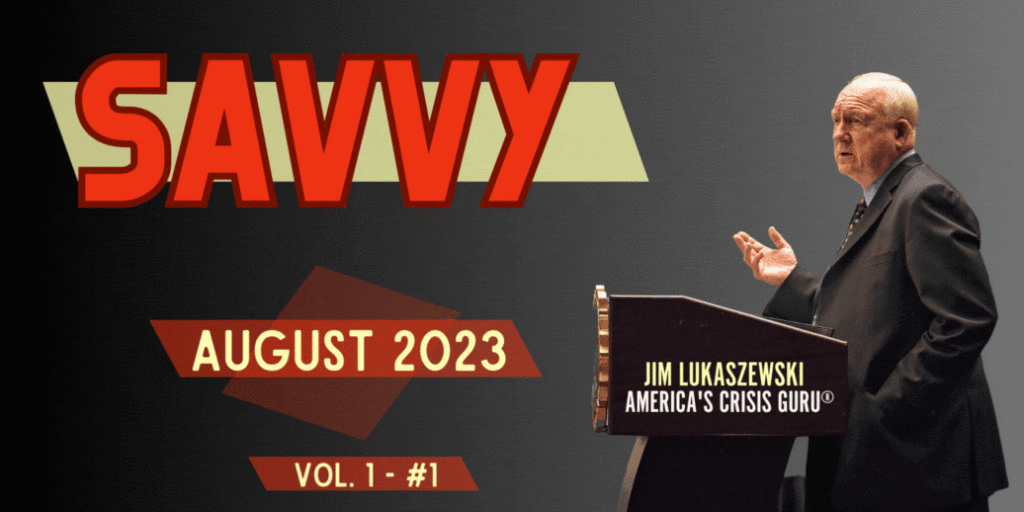By James E. Lukaszewski
ABC, Fellow IABC; APR, Fellow PRSA; BEPS Emeritus
America’s Crisis Guru®
Rabbit Holes
- From Dictionary.com: A strange, disorienting, or frustrating situation or experience, typically one that is difficult to navigate.
- From Jim Lukaszewski: Self-inflicted, time-consuming distractions of one’s attention when sorting through stories, euphemisms, metaphors, allegories, analogies, lies, and other creations from The Liar’s List, everything but the truth.
Ethics and ethical behavior problems have always been the toughest game in town and for the last decade front and center across our country.
The Public Relations profession seems largely absent from this generation of willful silence, where lying, distortion, unacceptable behavior, and the confusion they cause are ignored and prevail. Perhaps a walk through what I’ve learned in four decades as a teacher, advocate, direct manager of ethical recoveries, decision-making, and practices could be helpful.
The largest lesson I’ve learned is that all questionable, inappropriate, unethical, unconscionable, immoral, predatory, improper, victim-producing, and criminal behaviors are intentional. Yes, intentional.
You may want to go back and re-read the previous paragraph just to get it in your mind. We can debate this if you’d like, but you know it’s true.
There is no such thing as being accidentally unethical, or accidental fraud, or accidental harassment, or accidental misbehaviors in countless varieties. These are decisions adults make intentionally. In the course of my career, I’ve worked in many cultures, not every culture, but there is a startling consistency between what is right in most cultures and what is wrong in most cultures.
By the same token, I have also learned that civil, compassionate, decent, ethical, honorable, integrity-driven decisions, lawful behavior and leadership decisions, and moral behaviors are also intentional. The choice is always clear, and the choice is always yours, it’s rabbit holes or sensible useful, ethical decisions. You know the difference.
In the ethics business, you read a lot of philosophy from many different places and eras. The definition of ethics, the one I’ve always gravitated toward, is the one by American Philosopher Will Durant and his wife Ariel. In 1926, in the introduction to his book, “The Story of Philosophy,” he defined ethics. His definition was clear and simple, “Ethics is the search for ideal behavior.” Whoa! Yes.
I know that some who read this will once again write me rather lengthy explanations of why ethics is more complicated than this simple thought. Yet, in my reality at least, one of the key rules of finding truth is that it is often a lot simpler than you think or may have been led to believe. Rabbit holes hold everything but the truth.
In my work, I often speak of candor which I define as, “Truth, with an attitude, delivered right now!!”. Truth is always more powerful when delivered briefly and promptly.
Why are unethical behaviors so prevalent in our culture and in other cultures? My experience is that silence dominates our culture as it does in so many others. Silence is the great enabler of all bad behavior and decisions. As many of you know, my career has been about other people’s very serious troubles. And when trouble happens, some people head for the exits, those in charge tend to behave as though nothing has happened for as long as possible, putting silence in charge.
Our own profession has a reputation for avoiding conflict and candor. This lack of directness is noticed. This reluctance to engage on crucial issues is toxic to PR’s effectiveness. The clients I help who are in trouble often exhibit the same basic trouble-brewing behaviors, failing to name what is happening or worse finding ways to euphemize and therefore avoid getting the benefits of candor and clarity. People and employees notice this lack of directness, sometimes intentional mis-directness.
15 years ago, I had an extraordinary client in the pharmaceutical business who had gotten into trouble through negligent scientific activity. They were caught, publicly humiliated for a brief period, and ultimately prosecuted. There were deaths, many injuries, and six went to prison. The Chairman was acquitted mid-trial and retired. This frightening journey began with an FBI raid, agents carrying shotguns and other weapons invading a company factory.
The leaders of the company took powerful, even courageous steps. Among other things, they hired an ethics organization to talk to employees about what leadership was expected to do during this particular crisis. The results of that research guided the company after it plead guilty to numerous felonies to rehabilitate itself following the guidelines revealed in these ethics studies, and the provisions of their plea agreement.
Using employee’s own words we produced a document, “The Ethical Expectations of Leadership”. Turns out, not surprisingly, that employees have extraordinary expectations of leadership, especially in situations of emergency and crisis. There were 10 ethical expectations: words to succeed by and prevent bad behavior.
The Ethical Expectations of Leadership
- Find the truth as soon as possible: Tell that truth, and act on it immediately.
- Promptly ask the tough questions and answer them thoughtfully: This also meant asking and answering yet-to-be-asked questions by those who will be affected by whatever the circumstance is or will be.
- Teach by parable: Emphasizing right way, wrong way behaviors, rather than metaphors or warm-hearted emotional stories.
- Vocalize core business/organizational values and ideals constantly: Employees search for these most when there is trouble in the room or on the horizon. This search occurs every day.
- Walk the talk: Be accessible; help people understand the organization within the context of values and ideals, at every opportunity meetings large and small, gatherings large and small. This is a prime responsibility of all management, managers, and especially first-line supervisors.
- Help, expect, and enforce ethical leadership: People are watching, people are counting, and people know when there are lapses in ethics causing trust to be broken. When bad things happen in good organizations, it’s these occasional lapses that deepen the troubles.
- Preserve, protect, defend, and foster ethical pathways to the top of the organization: Constantly identify, explain, explore, and warn about situations where ethical processes can be compromised on the way, especially among executives on their way up the career ladder. Also, management becomes strangely silent as trouble mounts.
- Be a cheerleader, model, and teacher of ethical behavior: Ethical behavior builds and maintains trust. In fact, to have trust in an organization requires that its leaders act with integrity, ethically, and constantly.
- Make values at least as important as profits or personal gain: Studies of employee satisfaction show most people seem to enjoy working more and staying longer when they are with organizations they respect and who respect them. Wherever you find an organization or company that puts values on the same level as profits or personal advantages, there is a higher level of loyalty and support. Companies who do this specifically on principle are noted by everyone. People want to be a part of it.
- Respect employees: Respect is something all employees seek more than anything else. It’s that reciprocal respect that builds an ethical foundation for working and living, believing, and loyalty. Respect is ultimately what immunizes organizations against bad decisions and unethical behavior.
The fastest way to resolve ethical issues, problems, and questions is to begin with the truth, stick with the truth, and factually support the truth. Use other techniques and strategies turns out to be distracting and often reputationally damaging. Those rabbit holes will require that you dig yourself out. Your troubles will persist until you get to the truth.
James E. Lukaszewski, ABC, Fellow IABC; APR, Fellow PRSA; PRSA BEPS Emeritus; is the longest-serving member of the PRSA Board of Ethics and Professional Standards (BEPS), for more than 30 years.

